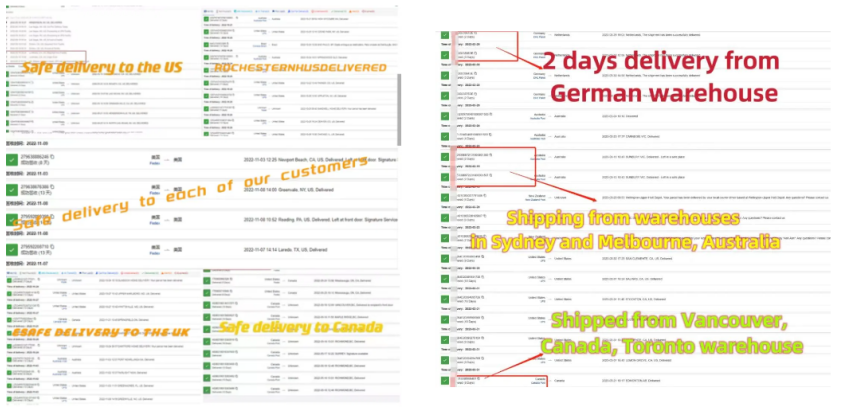
- +86-13363869198
- weimiaohb@126.com

ធ្នូ . 13, 2024 02:29 Back to list
Eperisone Hydrochloride CAS 56839-43-1 Reliable Supplier for Pharmaceutical Applications
Eperisone Hydrochloride (CAS 56839-43-1) An Overview of Suppliers and Market Trends
Eperisone hydrochloride, a muscle relaxant, has garnered significant attention in the pharmaceutical market due to its effectiveness in alleviating muscle spasms and associated pain. With the chemical structure denoted by its CAS number 56839-43-1, eperisone hydrochloride is primarily utilized in treating conditions such as cervical spondylosis, low back pain, and other musculoskeletal disorders. As the demand for this medication grows, it becomes imperative to identify reliable suppliers that adhere to quality standards and regulatory guidelines.
The Role of Eperisone Hydrochloride in Medical Applications
Eperisone hydrochloride serves as a central muscle relaxant, functioning by inhibiting the excessive activity of spinal reflexes. Unlike other muscle relaxants, it has a unique mechanism that offers both peripheral and central muscle relaxation, making it an essential alternative for patients who may experience adverse effects from traditional treatments. The drug has been shown to improve mobility and reduce pain, enhancing the quality of life for many individuals suffering from debilitating muscular conditions.
Quality Assurance in Pharmaceutical Supply
When sourcing eperisone hydrochloride, quality assurance is paramount. Suppliers must adhere to Good Manufacturing Practices (GMP) to ensure the safety, efficacy, and consistency of their products. Prospective buyers should seek suppliers who can provide Certificates of Analysis (CoA) and other documentation that verifies the quality and purity of the compound. Reliable suppliers typically undergo stringent testing and maintain transparency in their operations, which builds trust and confidence amongst consumers.
The Global Supply Chain for Eperisone Hydrochloride
eperisone hydrochloride cas 56839-43-1 supplier

The market for eperisone hydrochloride is not confined to a single region; it has a global footprint. Countries such as China, India, and various regions in Europe and North America are prominent players in the production and distribution of this compound. Chinese manufacturers, in particular, have established themselves as leading suppliers due to their robust production infrastructure and cost-effective pricing strategies. However, buyers must exercise caution and conduct due diligence to ensure compliance with international quality standards.
In addition to regional suppliers, there are also niche companies specializing in the research and development of pharmaceuticals that offer customized solutions for pharmaceutical companies looking to procure eperisone hydrochloride in bulk or as part of complex formulations.
Market Trends and Future Prospects
The demand for muscle relaxants, including eperisone hydrochloride, is expected to increase as the global population ages and the prevalence of musculoskeletal disorders rises. Trends indicate a shift towards more effective and safer medications, which has fueled interest in eperisone hydrochloride as a viable option. Additionally, advancements in pharmaceutical technologies and the growing trend towards personalized medicine are likely to influence the market dynamics.
As healthcare providers and patients seek alternatives to traditional therapy, eperisone hydrochloride's mild side effect profile and dual action mechanism may position it favorably within the market. This potential growth emphasizes the importance of suppliers maintaining high standards of quality and compliance to meet regulatory requirements across different markets.
Conclusion
Eperisone hydrochloride (CAS 56839-43-1) stands out as an essential compound in the realm of muscle relaxants, providing respite from severe muscle spasms and pain for various patient populations. As the demand for this medication continues to rise, it becomes increasingly important for suppliers to focus on quality, transparency, and regulatory compliance. The evolution of the global pharmaceutical landscape will further dictate the availability and accessibility of eperisone hydrochloride, necessitating awareness among stakeholders regarding supplier reliability and market trends. As such, healthcare professionals and pharmaceutical companies should remain vigilant and informed when navigating the supply landscape for this valuable therapeutic agent.
-
High Quality SGT-163 CAS 1099-87-2 Supplier & Factory Reliable SGT-163 Manufacturer
NewsJun.10,2025
-
High Quality 3-Chloropyridine CAS 626-60-8 - Reliable Factories & Suppliers
NewsJun.10,2025
-
CAS 157115-85-0 Bulk Suppliers - High Purity & Low Prices
NewsJun.10,2025
-
High Purity PMK Ethyl Glycidate Manufacturer 99% Quality Supply
NewsJun.10,2025
-
Pure CAS 57-85-2 Testosterone Propionate Pharma Grade Supplier
NewsJun.09,2025
-
Premium Tadalafil CAS 171596-29-5 Suppliers & Factories
NewsJun.09,2025